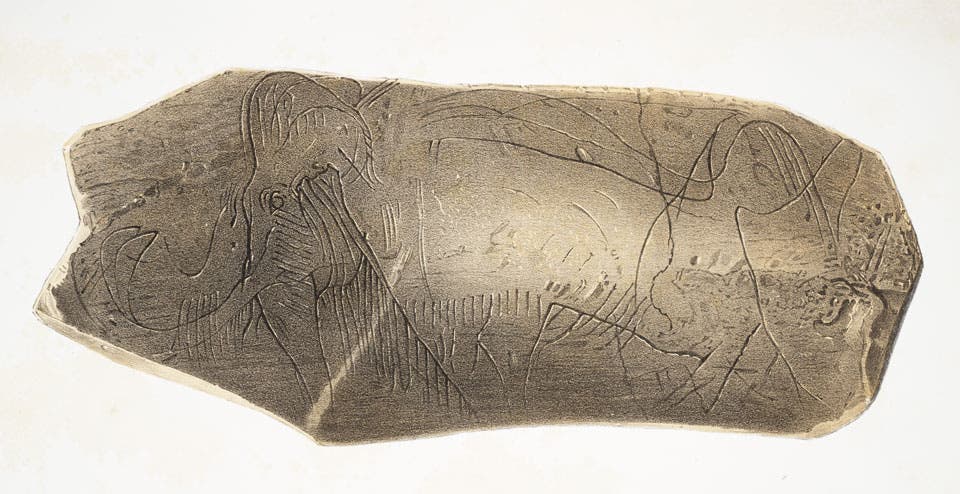The Red Lady of Paviland, 1823
Buckland, William (1784-1856). Reliquiae Diluvianae: Or Observations on the Organic Remains Contained in Caves, Fissures, and Diluvial Gravel, and on Other Geological Phenomena, Attesting the Action of an Universal Deluge. London: John Murray, 1823.
Buckland was the first professor of geology in England, and he had a fondness for caves, believing that cave fossils could tell us a great deal about life on earth in former times. When he visited Paviland cave in southern Wales, also known as Goat’s Hole, he found not only the remains of extinct animals, including a mammoth, but also a human skeleton, daubed with red ochre. Not believing that humans and mammoths could have been contemporary, Buckland concluded that the skeleton was that of a local Celtic woman, who lived there at the time of the Roman occupation of Wales. The skeleton would come to be known as the "Red Lady of Paviland," and she is something of a national hero in Wales to this day. In this sectional view of the cave, the “Red Lady” is quite visible, next to the mammoth skull. For a map, see the wall panel, “The Red Lady of Paviland.”

